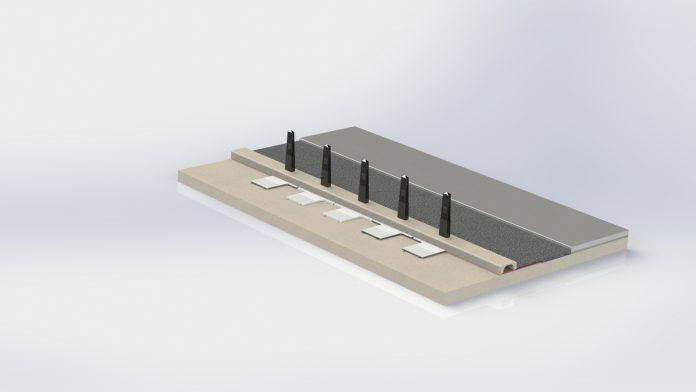An innovative bridge protection system, which can withstand the force of a 7,500kg truck travelling at 30mph, is now available to protect pedestrians from vehicle ramming attacks
The Bridge Protection System has been developed by ATG Access, an innovator of road blockers, bollards and vehicle barriers, the first of its kind.
The 2017 terrorist attacks on both Westminster and London Bridges highlighted the need for a security solution to protect pedestrians when crossing busy bridges on foot.
Robert Ball, engineering director at ATG Access, said: “Bollards are the ideal security solution for walkways on bridges, as they ensure that pedestrians are not trapped behind a continuous barrier, however existing permanent bollard systems are not suitable for use on bridges.
“Shallow foundation bollards and barriers are not shallow enough to fit without disturbing the primary bridge structure, and it is critical that the structural integrity of the bridge is not compromised during installation.”
The new Bridge Protection System has a foundation depth of just 40mm, meaning that minimal excavation is required and the structural integrity of the bridge is maintained. The system has also been successfully tested to both the IWA 14 and PAS 68 standards, stopping 7,500kg vehicles travelling at 30mph with less than 0.5m of penetration.
Whilst the system was tested with ATG Access’s Westminster high-security bollard, the foundation and socket can also be used with other bollard types and shapes to suit individual security and aesthetic requirements.
Ball added: “Sadly, it has become clear over the past couple of years that pedestrians on busy bridges are a potential target for hostile vehicle attacks.
“While temporary physical security measures have been put in place on some high-profile bridges, providing valuable protection in the short term, a permanent, proven solution is needed.
“Our Bridge Protection System is an industry first, and will help to safeguard the general public by both deterring potential perpetrators from attempting to commit these ramming attacks in the first place, and ensuring they are not successful if they do.”

















